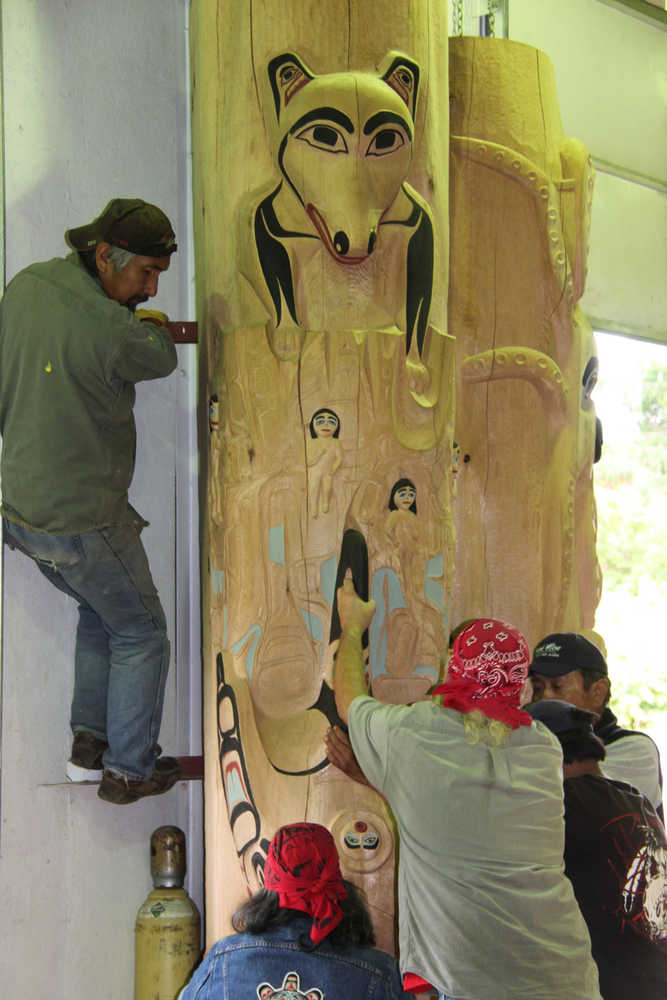It’s been years of planning, years of carving, and centuries of absence, but Xúna Shuká Hit, the tribal house under construction in Glacier Bay National Park, is in its final stages. At the end of this summer, the clans forced out of Glacier Bay by an advancing glacier will make a ceremonial return.
Mary Beth Moss, cultural anthropologist with Glacier Bay National Park and Preserve, said the basic structure of the building, including the roof, is complete. PK Builders of Ketchikan, the contractor, is now siding the outside of the building with hand-adzed yellow cedar brought to Glacier Bay by the Huna Indian Association.
Carvers have completed the interior house screen, an exterior screen, the first of the two totem poles, and four house posts, one representing each of the four clans that originated in Glacier Bay.
They are the T’akdeintaan, (Raven moeity), Wooshkeetaan, Chookaneidí and Kaagwaantaan (eagle moieties), and their interior pole carvings are a mountain goat, a shark, an octopus and a wolf, respectively.
In the totem poles, however, “we wanted to represent all of the clans that are currently living or represented in Hoonah — not necessarily originally from Hoonah…they’re all a part of it now,” said lead carver Gordon Greenwald.
The eagle pole, which they’ve completed, contains six clan crests. Now, they’re working on the raven pole, which has eight. (There may be a third totem, but that’s not yet decided.)
A canoe carved onto the interior screen, which also has symbols of the original clans, has no crests carved onto it, an effort towards that same inclusivity.
“Everybody’s in our homeland together with us, whether Native or non-Native, regardless of clan,” Greenwald said.
The exterior screen is in Bartlett Cove, where PK Builders will install it, but everything else is still at the green-lit woodshop in Hoonah. The team of carvers will travel to Bartlett Cove this summer to install the interior screen and the four posts, with help from Park Service manpower, and to do some cleanup on the exterior screen, Greenwald said.
“We really wanted to make sure that those treasures were handled by the people that created them,” Moss said.
This year, 2016, is the centennial anniversary of the US Park Service, so the event is a seminal one for that organization as well.
Xúna Shuká Hit looks as if it will be completed in June, Moss said.
The Park Service and Huna Indian Association have been meeting to both figure out the timing and the process for the dedication ceremony, Moss said. They anticipate at least 500 people will show up.
They haven’t yet picked a date, but have narrowed it to a range that “centers around the week of August 25,” Moss said.
“This has been almost a five-year project for us, and so it’s kind of exciting,” Greenwald said. “You’re excited to see it happening, and yet it’s coming to an end. It’s exciting to see that in just a few months, this idea that was sitting out there is going to be real.”
Almost two years ago now, we traveled to Hoonah to check in with carvers Gordon Greenwald, Herb Sheakley and Owen James. Take a look back in time here: http://www.capitalcityweekly.com/stories/040214/new_1201109688.shtml.
• Contact Capital City Weekly staff writer Mary Catharine Martin at maryc.martin@capweek.com.

